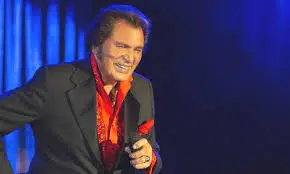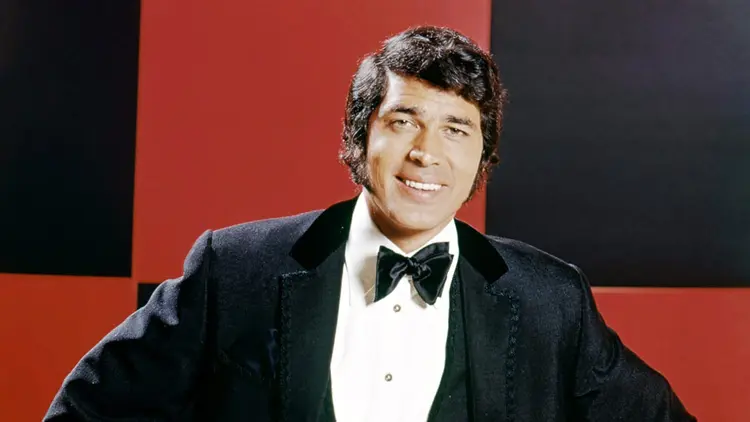Ah, the velvet voice of Engelbert Humperdinck! It’s like a warm hug for your ears, isn’t it? With a name as grandiose as Engelbert Humperdinck, you’d expect nothing less than some of the most heart-stirring, toe-tapping, and, dare I say, swoon-worthy tunes to have ever graced the airwaves. So, let’s dive into the wonderful world of Engelbert Humperdinck songs, a treasure trove of melodies that have charmed the socks off listeners around the globe.
“Release Me (And Let Me Love Again)”
“Release Me (And Let Me Love Again)” is more than just a song; it’s a pivotal moment in the history of pop music, marking Engelbert Humperdinck’s explosive entrance into the limelight. Released in 1967, this power ballad turned Humperdinck from a talented singer into a household name almost overnight. Its soaring melody, combined with Engelbert’s deep, emotive delivery, creates an unforgettable musical experience that resonates with the pain and longing of unrequited love.
What’s particularly fascinating is how this song held its own against The Beatles, one of the most dominant forces in music history. When “Release Me” clashed with “Penny Lane” for the top spot on the UK charts, it was Humperdinck’s heart-wrenching plea that came out on top, a testament to the song’s universal appeal and emotional depth.
This wasn’t just a win on the charts; it was a cultural moment that highlighted Engelbert’s impact on the music scene. The song’s success catapulted him into international stardom, setting the stage for a career that would be defined by romantic ballads and an unmistakable voice that could convey the deepest of emotions, making “Release Me” an indelible part of the Engelbert Humperdinck legacy.
“Quando Quando Quando”
Dive into the heart of Italy with “Quando Quando Quando,” a song that encapsulates the sweet, languid feel of Italian romance. Engelbert Humperdinck’s rendition of this classic is a masterclass in vocal charm and sophistication. Originally an Italian hit, the song found new life in Humperdinck’s hands, becoming one of his most beloved tracks.
His smooth, rich voice invites listeners to be swept away into a story of anticipation and longing, set against a backdrop of romantic idealism that’s as intoxicating as a summer night in Rome. The song’s question of “when” speaks to a universal yearning for love and connection, making it resonate deeply with audiences worldwide.
Engelbert’s performance is not just about the notes he hits but the emotion he pours into each word, turning the song into a timeless anthem of love’s hopeful wait. It’s this blend of impeccable vocal skill and emotional depth that has helped “Quando Quando Quando” stand the test of time. Beyond its melodic beauty, the song showcases Engelbert’s ability to transcend language and cultural barriers, connecting with listeners’ hearts across the globe. This track is a testament to Engelbert Humperdinck’s enduring appeal as a romantic balladeer, whose music continues to enchant and inspire.
“Les Bicyclettes De Belsize”
Embarking on a lyrical journey through a dreamy French landscape, “Les Bicyclettes De Belsize” captures the essence of a whimsical romance set against the backdrop of an idyllic European setting. Engelbert Humperdinck’s rendition of this song elevates it from a simple melody to an auditory masterpiece, reminiscent of a serene ride through Belsize, with its enchanting cobblestone lanes and vibrant floral displays.
Originating from the 1968 short film bearing the same name, the song intertwines with the movie’s narrative, adding layers of depth and emotion to the cinematic experience. Engelbert’s velvety vocals glide effortlessly over the lilting tune, painting vivid pictures of love and leisure in the listener’s mind. The song’s charm lies not just in its melody but in its ability to transport you to a place of pure joy and beauty, making every listen feel like the first.
It stands as a testament to Engelbert Humperdinck’s skillful artistry and his knack for bringing storytelling to life through music. “Les Bicyclettes De Belsize” is more than a song; it’s a timeless ode to the beauty of simplicity and the enduring power of love, encapsulated within the magical allure of a French village.
“Spanish Eyes”
“Spanish Eyes” is a song that radiates the passion and warmth of a Mediterranean love story, brought to life by Engelbert Humperdinck’s rich and expressive voice. This classic ballad, with its tender melody and heartfelt lyrics, evokes the mystique and allure of Spain’s romantic landscapes, under the spell of an enchanting gaze. Engelbert’s rendition has cemented its place in the hearts of listeners, transcending time and genre to become one of his most celebrated performances.
The song’s appeal lies in its ability to blend the vibrancy of Spanish culture with the universal themes of love and longing, creating a piece that resonates on a deeply personal level with audiences around the world. What sets Engelbert’s version apart is not just his vocal talent but his emotional delivery, which captures the essence of the song’s soulful longing.
“Spanish Eyes” has been covered by numerous artists over the years, yet Engelbert’s interpretation remains unparalleled, showcasing his unique ability to infuse songs with a distinct sense of character and depth. This track is a shining example of his legacy as a master of the romantic ballad, with the power to transport listeners to a place where love knows no boundaries, and every melody tells a story.
“Am I That Easy to Forget”
Engelbert Humperdinck’s “Am I That Easy to Forget” is a masterpiece that cements his reputation not just among pop singers, but as a legendary crooner whose music transcends time. This track, one of his signature songs, delves into the poignant aftermath of love lost, weaving a tale that resonates with anyone who has ever questioned their lingering imprint on a former love’s heart.
Engelbert’s delivery is a delicate balance of vulnerability and resonant strength, showcasing his unique ability to navigate the intricate landscapes of human emotion. William Ruhlmann, a respected music critic, might categorize this as a definitive example of Engelbert’s profound impact on the romantic ballad genre, highlighting his skill in crafting songs that speak directly to the soul.
The song’s narrative of forgotten love and haunting memories is rendered timeless by Engelbert’s soulful performance, affirming his status not merely as one of the great pop singers of his time but as a true love sweetheart in the world of music. This ballad remains a poignant reminder of Engelbert’s musical legacy, showcasing his unparalleled ability to convey deep emotional truths.
“A Man Without Love”
“A Man Without Love” stands as a towering achievement in Engelbert Humperdinck’s illustrious career, perfectly encapsulating the essence of what has made him one of the most beloved pop singers of his generation. This song, counted among his signature songs, speaks to the universal longing for connection and the profound vulnerability that accompanies the search for love.
With a voice that carries both the weight of longing and the lightness of hope, Engelbert crafts a narrative that is as compelling as it is relatable, positioning him as the quintessential love sweetheart of his era. Critics like William Ruhlmann have noted Engelbert’s unique ability to blend vocal prowess with deep emotional resonance, marking tracks like “A Man Without Love” as pivotal moments in the landscape of popular music.
Unlike the upbeat “Ten Guitars,” which showcases Engelbert’s range and versatility, “A Man Without Love” delves into the more tender, introspective aspects of his repertoire. It is this ability to navigate the spectrum of human emotion that has solidified Engelbert Humperdinck’s place in the hearts of listeners around the globe, making “A Man Without Love” a timeless anthem for the hopeful romantic in us all. Through this song, Engelbert invites us to explore the depths of our own desires for love and companionship, securing his legacy as a master of the romantic ballad.
“There Goes My Everything”
Engelbert Humperdinck’s rendition of “There Goes My Everything” stands as a monumental achievement in his illustrious career, embodying the very essence of what makes a song not just heard, but felt. Within the confines of this track, Engelbert explores the profound depths of loss, painting a vivid picture of a love that once was, now vanished, leaving a void that echoes through the listener’s soul.
This song, a cornerstone of his album repertoire, showcases Engelbert’s unparalleled ability to deliver a performance that marries grandeur with intimacy, transforming a simple melody into a cathartic experience for anyone who has ever loved and lost. “There Goes My Everything” is not merely a song; it is a journey through the heart’s most vulnerable spaces, guided by Engelbert’s masterful vocal prowess. His interpretation elevates the track to a timeless classic, revered across generations.
It’s a testament to his skill as a vocalist that he can turn such a poignant theme into a universal anthem of loss and longing. This song underscores Engelbert’s role as a better man for having loved, reflecting on the ways love shapes us, even in its absence. It stands as a lovely way to explore the complexities of heartache, making it an indispensable part of his musical legacy.
“The Way It Used to Be”
“The Way It Used to Be” is a melodic embrace of nostalgia, masterfully performed by Engelbert Humperdinck, that invites listeners on a reflective journey back to moments etched in the heart’s memory. This track, a highlight of his album, encapsulates the bittersweet essence of reminiscing about the past, with Engelbert’s voice serving as the perfect conduit for the emotional depth and beauty of the melody.
His performance is steeped in a longing for the past, a sentiment that resonates deeply with listeners of all ages, evoking a sense of nostalgia that is both comforting and melancholic. Engelbert’s ability to imbue each note with a sense of personal longing transforms the song into a poignant reminder that sometimes, the past holds keys to our present understanding. “The Way It Used to Be” does more than just recall memories; it celebrates them, turning reflection into an art form.
This track highlights Engelbert’s stature not only as a legendary pop singer but as a timeless storyteller, capable of weaving complex emotions into a lovely way of storytelling through music. It reinforces his position as a man for having loved deeply, not just in his personal life but through the universal themes explored in his music. Engelbert’s rendition of “The Way It Used to Be” remains a vital part of his discography, a song that beautifully captures the essence of looking back to move forward.
“Winter World of Love”
“Winter World of Love” is Engelbert Humperdinck’s melodious ode to the serene beauty and intimate quietude of the winter season, wrapped in the warmth of romantic love. This enchanting ballad serves as a testament to Engelbert’s versatility as an artist, seamlessly blending the thematic elements of a winter world with the universal language of love.
The song invites listeners into a picturesque scene of snow-covered landscapes and frosty air, all the while basking in the warmth of love’s embrace. Engelbert’s velvety voice is the perfect companion to the song’s gentle melody, creating an atmosphere of cozy romanticism that is ideal for cold winter nights. His ability to convey the feeling of warmth and closeness against the backdrop of a chilly winter world is unparalleled, making “Winter World of Love” a unique and cherished entry in his discography.
This track not only showcases Engelbert’s musical prowess but also highlights his skill in crafting songs that resonate with listeners, regardless of the season. “Winter World of Love” stands out as a classic, proving that the emotional depth and beauty of Engelbert’s music indeed know no seasonal bounds, making every listen a journey into a winter wonderland of love.
“The Last Waltz”
“The Last Waltz” is, without a doubt, one of Engelbert Humperdinck’s most iconic and timeless pieces, encapsulating the elegance and emotional depth that have defined his career. This majestic ballad, with its sweeping orchestration and heartfelt lyrics, serves as a grand culmination of Engelbert’s ability to capture the essence of life’s most poignant moments through music.
The song, named after the traditional dance marking the end of a ball, is imbued with a sense of finality and bittersweet farewell, yet it carries an undercurrent of hope and timeless love. Engelbert’s rendition of “The Last Waltz” has become a defining moment in his career, showcasing his exceptional vocal range and emotional expressiveness. His performance elevates the song to a universal anthem of love and goodbye, resonating with audiences worldwide and ensuring its place in the annals of music history.
The song’s lasting appeal lies in its ability to intertwine the joy of love with the inevitability of parting, a theme that Engelbert delivers with grace and poignancy. “The Last Waltz” is not just a song; it’s an experience, a fitting tribute to the enduring power of love and the artistry of Engelbert Humperdinck, making it a cornerstone of his musical legacy and a beloved classic among fans across generations.
“Santa Lija (Sogno d’Amore)”
Engelbert Humperdinck’s “Santa Lija (Sogno d’Amore)” is a testament to his ability to cross cultural and musical boundaries, blending the rich textures of Italian operatic tradition with his signature romantic balladry. While not as widely recognized as some of his chart-topping hits, this song showcases Engelbert’s versatility and deep emotional resonance. “Santa Lija,” translating to “Saint Lucy,” and subtitled “Sogno d’Amore” or “Dream of Love,” dives into the realm of classical music, drawing inspiration from the passionate and dramatic world of opera.
Released as part of his album “Definition of Love” in 2003, “Santa Lija (Sogno d’Amore)” stands out for its lush orchestration and Engelbert’s powerful vocal delivery. The song’s lyrics weave a tale of longing and idealized love, themes that are recurrent in Engelbert’s discography, but with a distinct nod to the grandeur and intensity of Italian love songs. This track not only highlights his vocal prowess but also his ability to interpret and convey the depth of operatic music to a pop audience.
Engelbert’s rendition of “Santa Lija (Sogno d’Amore)” is a beautiful bridge between the worlds of pop and opera, offering listeners a unique musical experience that is both grandiose and intimately familiar. It underscores his status as a versatile performer who continues to explore and embrace diverse musical genres throughout his career, further enriching his vast catalog of songs.
Engelbert Humperdinck’s Unique Take on Classic Covers

Engelbert Humperdinck, with his velvety voice and emotive delivery, has not only graced the world with original hits but has also lent his unique charm to a variety of cover songs, making them distinctively his own. Among these, “Il Mondo,” “A Kind of Hush,” and “The Hungry Years” stand out, showcasing his ability to breathe new life into already beloved tracks.
“Il Mondo”
Originally performed by Italian singer Jimmy Fontana, “Il Mondo” captivated audiences with its heartfelt lyrics and melodious tune. The song, with its romantic overtones, speaks of a world that stops when the protagonist is in love. Engelbert Humperdinck’s rendition of “Il Mondo” brings an international flair to his repertoire, emphasizing the universal nature of love and connection.
His version elevates the song’s emotional depth, with his powerful vocal performance adding a layer of richness and warmth that only Humperdinck can deliver. Through his interpretation, “Il Mondo” transcends language barriers, appealing to a global audience and highlighting Engelbert’s versatility as a performer.
“A Kind of Hush”
“A Kind of Hush,” originally by Herman’s Hermits in the mid-1960s, is a song that captures the intimate moments of shared silence between lovers. Engelbert Humperdinck’s cover of this song is a testament to his ability to transform a pop classic into a smooth, romantic ballad.
His version softens the edges of the original, imbuing it with a tenderness and depth that resonates with listeners seeking a more mature and sophisticated love song. Engelbert’s rendition demonstrates his knack for selecting songs that align with his romantic balladeer image, further cementing his place in the hearts of his fans.
“The Hungry Years”
Written by Neil Sedaka, “The Hungry Years” is a poignant reflection on love and longing, themes that are recurrent in Engelbert Humperdinck’s musical journey. Engelbert’s cover of this song showcases his ability to convey complex emotions with sincerity and passion. His interpretation adds a layer of nostalgia and introspection, making “The Hungry Years” a reflective journey into the soul of its listener. Engelbert’s powerful delivery transforms the song into an emotional narrative that speaks of love’s trials and tribulations, echoing the experiences of many who have faced the bittersweet realities of life and love.
Through these covers, Engelbert Humperdinck not only pays homage to the original artists but also showcases his unique talent for making each song distinctly his own. His versions of “Il Mondo,” “A Kind of Hush,” and “The Hungry Years” are not just covers; they are reinterpretations that highlight his emotional range, vocal prowess, and the timeless appeal of his music. Engelbert’s covers are a testament to his enduring legacy as a musician capable of crossing genres and generations, leaving an indelible mark on the world of music.
Conclusion

From the passionate pleas of “Release Me” to the nostalgic strains of “The Last Waltz,” Engelbert Humperdinck’s songs are a testament to the enduring power of love, longing, and the human voice. His music has become a soundtrack for sweethearts, a collection of greatest hits that spans generations and continents. Whether you’re a lifelong fan or a curious newcomer, there’s no denying the impact of Engelbert Humperdinck’s songs on the world of music. So, here’s to Engelbert – may his tunes continue to fill our lives with joy, romance, and a little bit of that signature Humperdinck flair.


